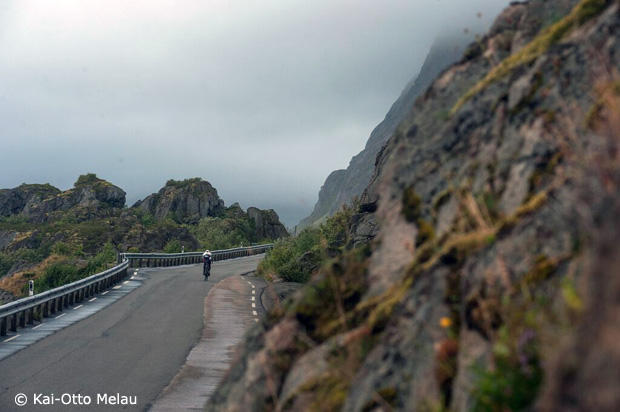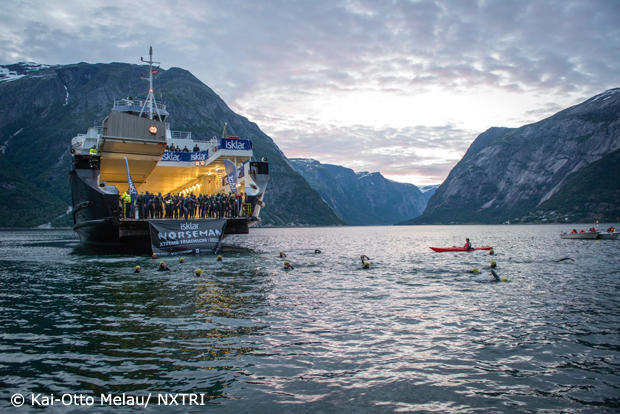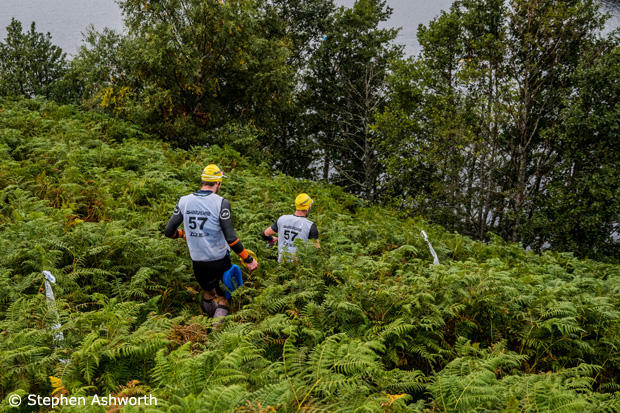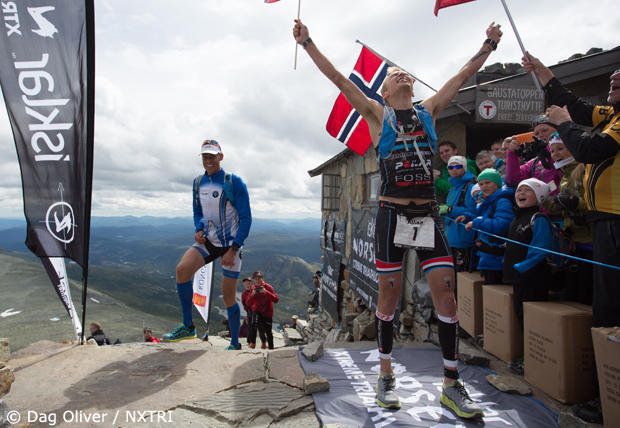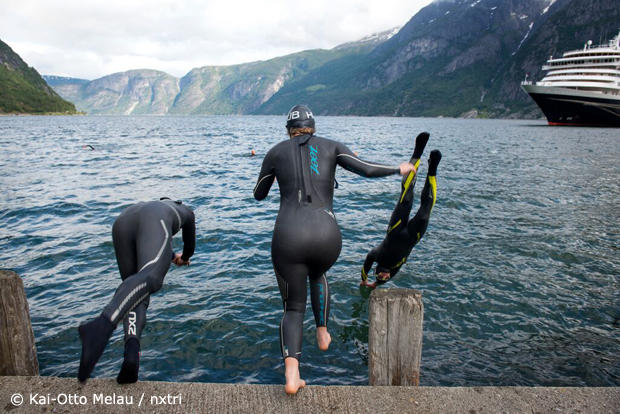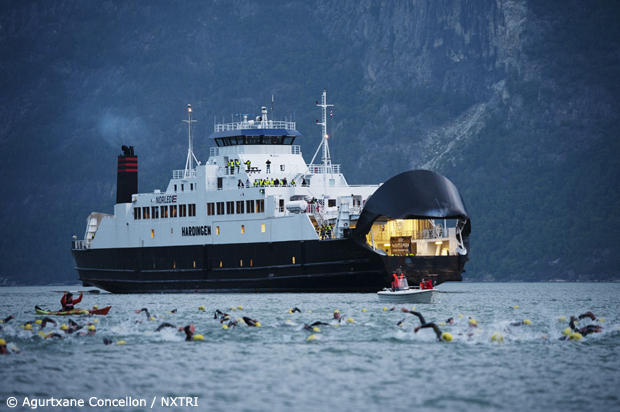Alaskaman Extreme Tri
I was asked recently what motivates me. My answer was that I'm not hugely competitive with other people; I'm hugely competitive with myself. My goal is to be better than I was. I like racing the course a lot more than I like racing other people. Ultra distance racing still, generally, seems to reward this kind of approach. Whereas the 70.3 distance has now become really "a long short-course race," as opposed to the "short long-course race" that it seemed to be in the past, races over 6hrs (including the ITU Long Distance 4k/120k/30k format, at least on tougher courses) are really hard to race against someone else. You must race within yourself, because the penalties for mistakes in pacing early get paid at the end of the race. And they are paid with harsh interest. The too-fast first couple hours extract their blood debt in the form of walked miles at the end of the marathon.
However on less difficult courses, as races get more competitive, and fields get larger and tighter, the solitary nature of the effort starts to waver. Even when policed effectively, the prescribed draft zones still offer a meaningful benefit, especially in the absence of crosswinds or significant topographical challenges. And the benefit grows with the number of athletes. I'm not here to lament this situation. It's simply the reality. And it's great that 2,000-3,000 athletes desire to show up at many of these races; there are way more positives to the growing field sizes that result from increased interest in the sport than there are detriments. And there are still plenty of courses where the punishing nature of the course over an ultra distance overrides everything else. The courses in Lanzarote, Whistler, Wales, and Nice all come to mind as locations where the course dictates the outcome of the race more than any other factor. But there seems to be a growing trend in interest where the course is all there is. Small fields. Truly brutal courses. The kind of venue where the idea of survival looms large. The French seem to have a particular fondness for this sort of course, with both the Alpe d'Huez course and the 140.6mi/226km course in Embrun typifying this experience. But these two races are still mostly traditional in their overall experience. The courses are hard, but there are aid stations. There are (reasonably) large fields. It's likely that you'll spend at least some of your day in the company of others.
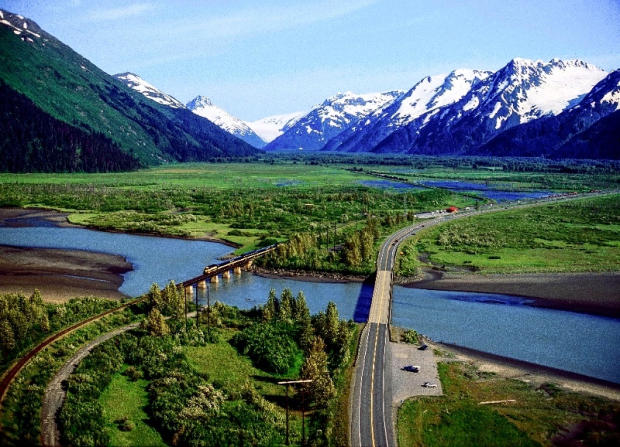
One step further removed from these traditional-but-challenging races are the so-called extreme races. Norseman was the first of these to really gain traction and is now the standard bearer for the growing list of extreme tris. Extreme races are typified by a few common elements. They tend to be point to point courses across all three sports. You swim from A-to-B. Bike from B-to-C. And run from C-to-D. The fields are small. Very small. There are no aid stations; you need to bring your own support crew. These events are "races" only in the loosest sense. There are strict cutoffs, and the clock is as true as it ever is, but time is only meaningful within the context of the day. Even year to year, variance in conditions makes comparison of times often meaningless even on the same course. And, of course, the course itself is quite malleable. Norseman has varied in length across the years based off the need to find adequately warm water for the swim. You will not set your ultra distance PR at an extreme triathlon.
In addition to Norseman, with it's fjord swim and epic mountain-top finish, there's also the Celtman, with it's epic Braveheart-style run over two munros in Scotland. Another perennial favorite for extreme racers is the unique Swiss Inferno, with it's combination bike course that requires both a road bike and a mountain bike, and it has a shorter run than a marathon at only 25km, but with almost 2200m (over 7,000ft) of elevation gain, it more than makes up for it. But a quick Google search reveals still more. There's the Stone Brixiaman in Italy, and another in Switzerland, the Swissman.
Today, I learned of the announcement of another addition to this growing list. The Alaskaman which runs point-to-point-to-point from Seward, AK to Girdwood, AK. As with Norseman, it features a brutally cold swim – expected water temperature of 55F (13C), a hilly and rugged bike course that gains just over 4,000vft (1,200vm), and then a
punishing run with a mountaintop finish that gains over 5,000vft (1,500vm) with the last 6mi/10km gaining the overwhelming majority of that gain with 4,000 of those 5,000 vertical feet over rocky hiking trails. And there is a hard limit on field size at 300 athletes. Race day is tentatively scheduled for July 15, 2017. The race starts at 5AM and ends at 11:00PM, but at that time of year, there will be daylight the whole day. (Dawn comes at 5:07AM, and the sun sets at 11:37PM.)
The swim takes place in Seward, AK in Resurrection Bay, which according the race organizers typically features calm water that – aside from the cold temperatures – are ideal for swimming. Athletes will start south of Seward at Lowell Point and enter the water at Miller's Landing before swimming north along the shore to exit at Waterfront Park in Seward.
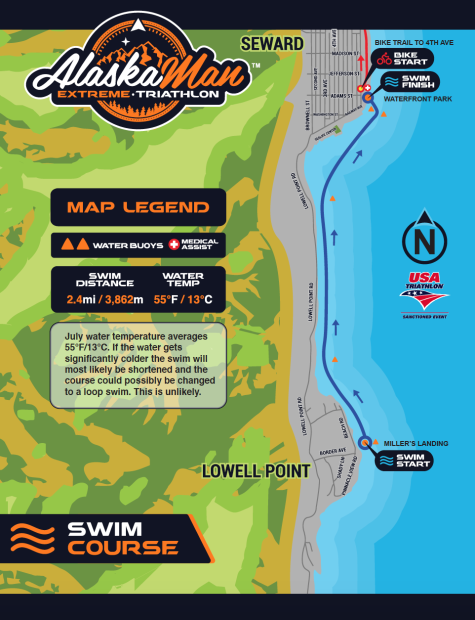
The bike runs from Seward along Seward Highway West almost to Girdwood. Most of the elevation comes in the first half, with the biggest climb coming around 50mi and then another solid climb at about 60mi. The last 40mi or so are pretty flat. Athletes must provide their own SAG support. There are medical checkpoints on course, but no aid stations in the traditional sense.
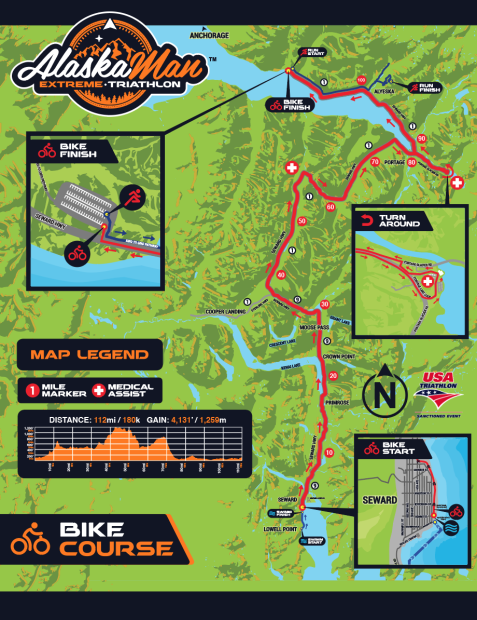
The run course takes athletes along the highway from Girdwood to the base of Mt. Aleyska and then up it to the summit. You do get a mandatory gondola ride down (with your pacer, also mandatory for the last 10km).
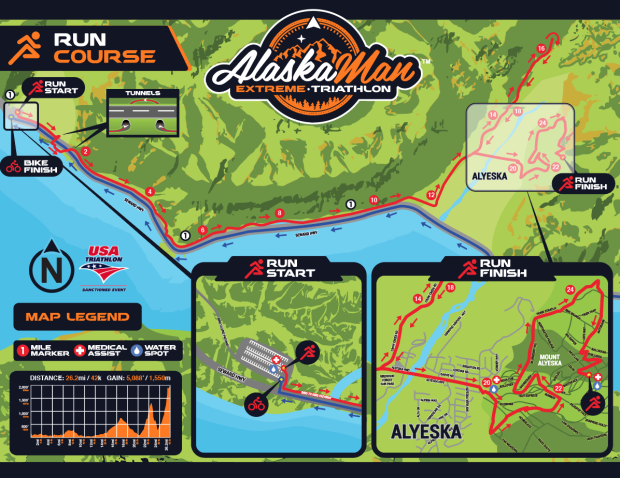
The AKXTri website has a lot of great videos and other content beyond what we've reposted here, and I'd encourage everyone to check it out at AKXTri.com.
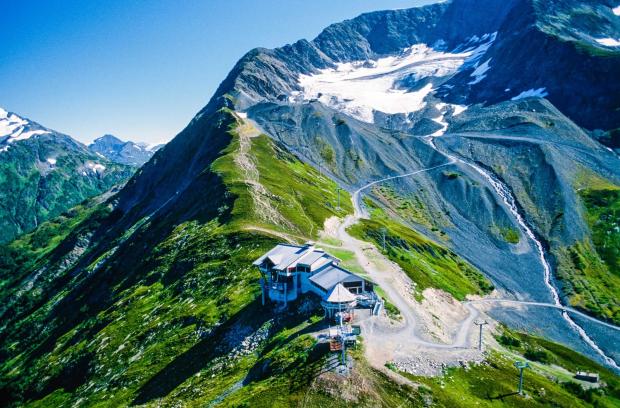
It's hard for me to express the way in which courses like these resonate with me. The original, now-defunct Leadman 250 in Vegas, with its insane ride through the Nevada desert from Lake Mead to the Valley of Fire and back, is the closest I've ever come to race nirvana. It was 6.5hrs of agonizing bliss. I love racing Ironman, and I could have ridden the Penticton Ironman Canada course – and nothing else – for the rest of my life and been happy. Ironman is incredible, in large part because of the shared experience of something that brings people together in a way that is amazing and truly special. My favorite word to describe Ironman is "possible," and I think there's something remarkable in that. At the same time, the impossibility of these extreme races speaks to me in a different way. Extreme triathlons stands apart from Ironman. Complete and equally perfect in their own way.


